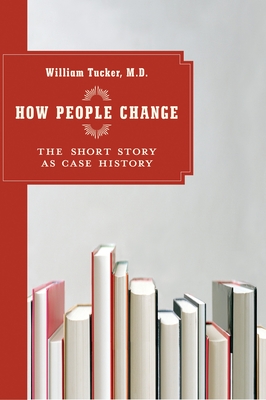You are here
Back to topHow People Change: The Short Story as Case History (Paperback)
$27.00
Usually Ships in 1-5 Days
Description
A manual to show practicing physicians and medical students how to make use of short stories to help their patients adapt to their illnesses and participate in their treatment.
For most people, the quickest route to wisdom, other than experience, is through stories. Stories speak across generational lines and cultures, emphasize the universality of human experience, and offer insight into the dynamics involved in unfamiliar situations.
Freud and D.W. Winnicott were among the few psychiatrists able to write case histories emblematic of the vicissitudes of the human condition. As a rule, the technical and dry approach of the psychiatric literature is not fit to teach doctors how to connect to their patients' suffering because it privileges pathological categories over experience. Tucker, therefore, turns to the drama and conflicts of fictional characters, to restore the human dimension of medicine and to entice practitioners to grasp the emotional and intellectual layers of the particular situations in which their patients are entrapped. The sixteen stories selected here are analyzed to show how they illustrate the process of change, as defined by Erik Erikson’s description of the "life cycle." Some of these stories include "Gooseberries" by Anton Chekhov, "The Dead" by James Joyce, and "Her First Ball" by Katherine Mansfield. Physicians and medical students can turn to these narratives as examples of how others have dealt with challenges and debilitating conditions, and encourage their patients to follow similar paths to bring about change in their lives.
About the Author
William Tucker, M.D.
William Tucker, M.D., is Clinical Professor of Psychiatry at the Columbia University College of Physicians and Surgeons. He has been teaching psychiatry and the humanistic aspects of medicine to psychiatric residents, medical students learning internal medicine, and interested colleagues, for the past 30 years.
Praise For…
The Yale Journal for Humanities
A psychiatrist in New York with an MA in comparative literature from Yale, Dr. William Tucker has given us a fascinating book in which he takes a number of well-known short stories as case material for analysis, relying on Erikson's eight stages of life as a model of "normal development." That strait-jacket does not confine his exercise, nor his purpose to carry "narrative," now transplanted to the medical canon, back to where it started. He analyzes classic stories – or more properly their protagonists - as if they were patients.
In his foreward, the author writes, "I stumbled upon short stories as a form of poetry….patients began to seem to me like characters in a handful of these stories, which were applicable to one clinical situation after another. I started teaching these stories to residents and colleagues as if they were clinical cases. Later, I began to offer them to patients as ways of looking at their own experiences.
One may wonder whether psychoanalytic interpretation would turn out to be mainly an interpretation of the authors' imagination/skill in creating their characters and what they direct their creatures "to think and do, but so be it. And, as Tucker recognizes, there is no "true" account: his own reading could vary from someone else's, and both would be "correct." Regardless, the exercise seems a useful one. "I suppose that it is the difference between having a pain and knowing that I have a pain. Or as a psychiatrist responded when asked where his leg hurt, "In my head, of course!"
Why do authors shape their stories the way they do? Is it, as many narratives suggest, their own story sculptured or molded into a different form? Carl Jung advised clinicians to reshape the patient's narrative or at least the patients' interpretation of what had happened to them, an approach that has guided me in some patients. I am convinced that physicians shape their patients' responses by their questions and their stance. Tucker's book amplifies this approach; readers will find it rewarding to give the stories a close reading so that they can compare what they think with what Tucker illuminates.
To that end, Tucker has provided each story reprinted in full, so that his book will serve as material for workshop/discussion groups for physicians and medical students. I found that edifying, to compare the analysis/advice I would have given to the patients, oops the protagonists, with what Dr. Tucker concludes.
I recommend this book for just what the author suggests. Buy it, try it, and talk about the stories with your colleagues or students. That's what counts
